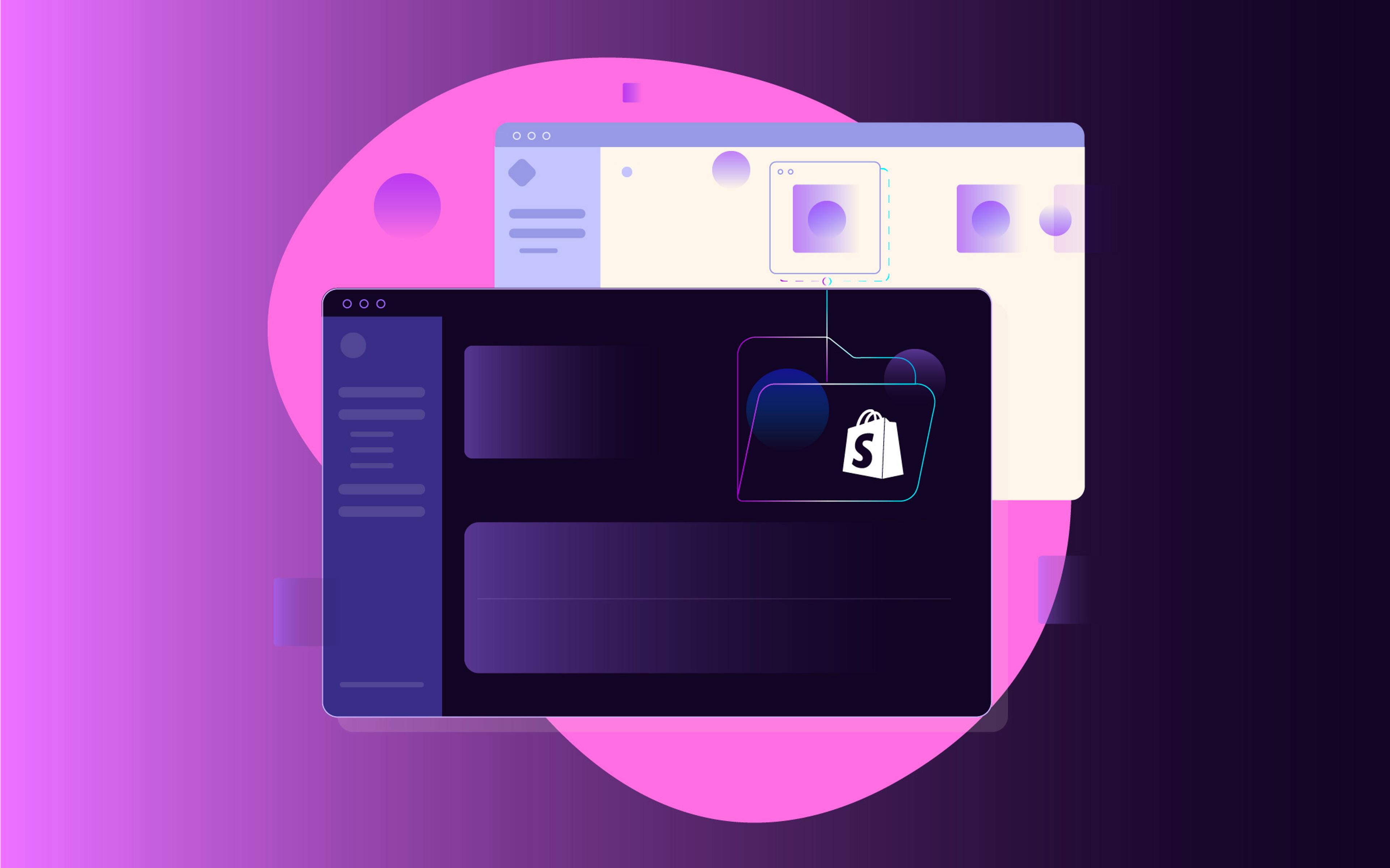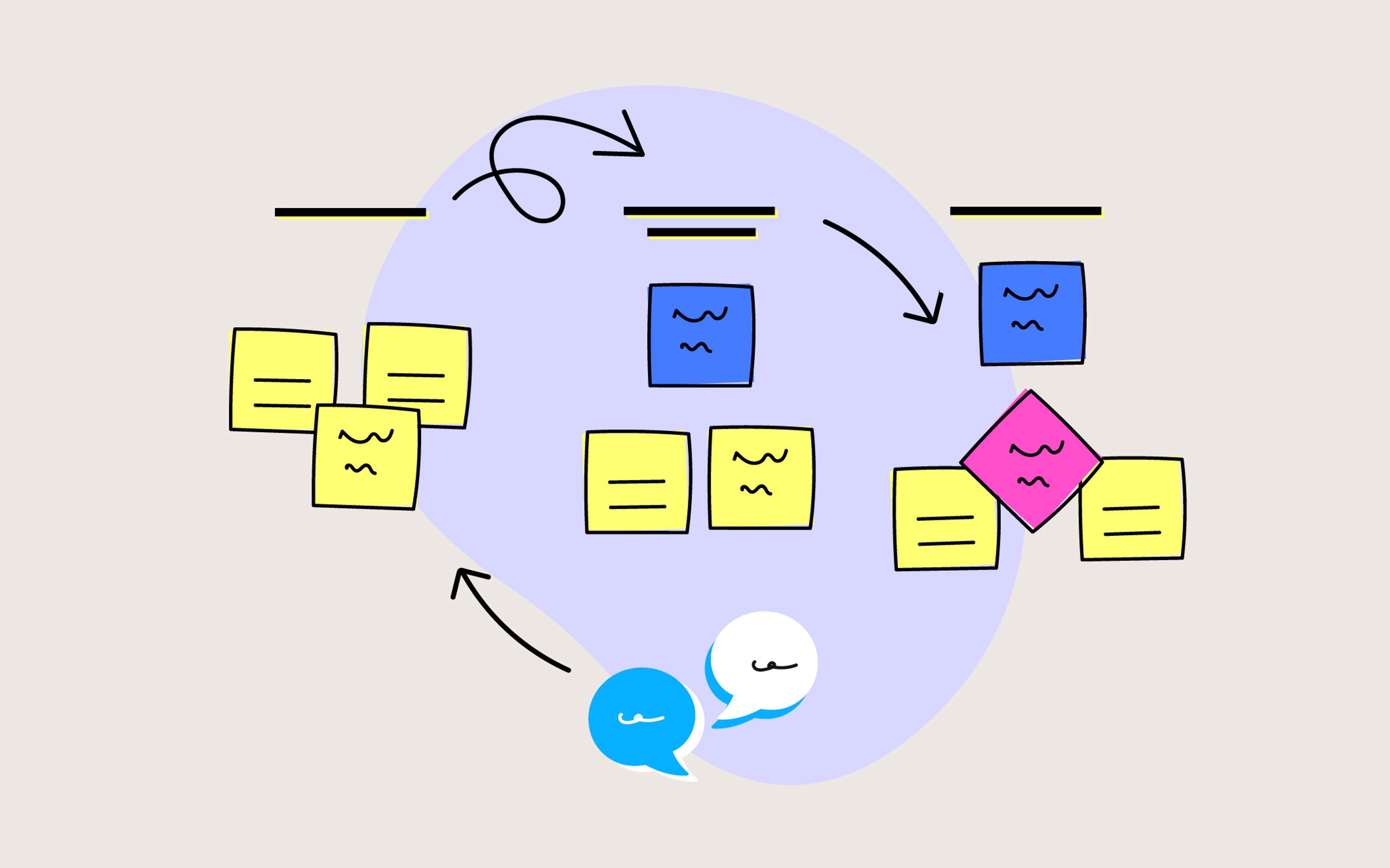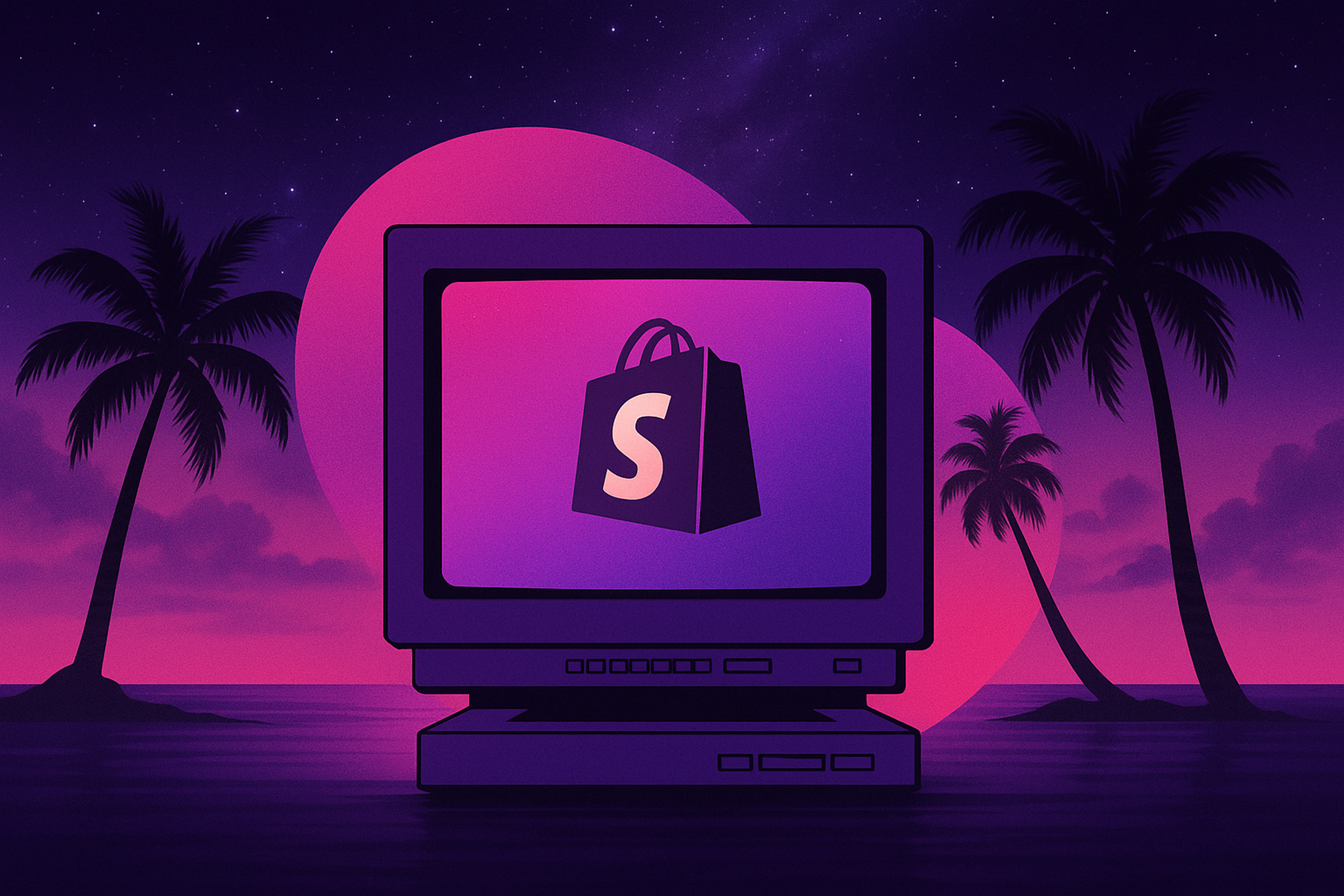This is the second article in a series about enterprise e-commerce replatforms. The first article is about running discovery workshops, which lay the foundation for a successful migration strategy.
Replatforming is one of the riskiest moves an enterprise e-commerce team can make. For brands processing thousands of orders an hour, the thought of switching platforms conjures visions of downtime, lost sales, and panicked operators scrambling to fix errors. It’s no surprise that many CTOs and e-commerce managers hesitate to move to Shopify Plus, even when their legacy platform is holding them back.
But it doesn’t have to be that way. At Nebulab, we’ve developed a phased, risk-mitigated approach to Shopify replatforming that allows enterprise brands to make the switch incrementally—without downtime, feature freezes, or disruptions to daily operations. The key? A zero-risk rollout strategy that begins with a comprehensive Discovery Workshop.
How to Roll Out Shopify Without Risk
One important tradeoff to consider with this approach: while it may slightly increase the overall project timeline, it significantly shortens your time-to-value. Because you're launching a lean implementation early in the process, your team begins learning, iterating, and delivering value from day one—long before a traditional big-bang launch would go live.
Our rollout strategy begins by identifying a part of the business that can be safely isolated. This might be a low-volume country, a non-core sales channel, or a product line with minimal business impact. We then build a lean Shopify implementation for that segment, prioritizing reliability over feature parity.
Once live, we run both platforms in parallel. To maintain data consistency, we implement bi-directional sync mechanisms between Shopify and the legacy platform. Orders, inventory updates, and customer data are pushed in near real-time via middleware or a shared OMS. For instance, when an order is placed on Shopify, it is instantly mirrored on the legacy platform, and vice versa. This ensures fulfillment, accounting, and analytics teams can continue operating without change.
Depending on the systems involved, we may use webhooks, direct API integrations, or tools like Matrixify—especially when data is already formatted for its use. Where necessary, we normalize data structures across platforms to avoid inconsistencies and edge-case failures. The result is a seamless flow of information, so business teams don’t need to alter their workflows.
We also implement robust monitoring and logging for every sync operation. This allows us to detect and resolve any data mismatches or delays before they become operational problems. By this stage, Shopify is already live in production—but the real value lies in observing its performance with real traffic and users.
Let’s break down the phases of a hypothetical rollout plan:
Phase 1: Run Shopify Side-by-Side
In the first phase, we establish a dual-platform setup.
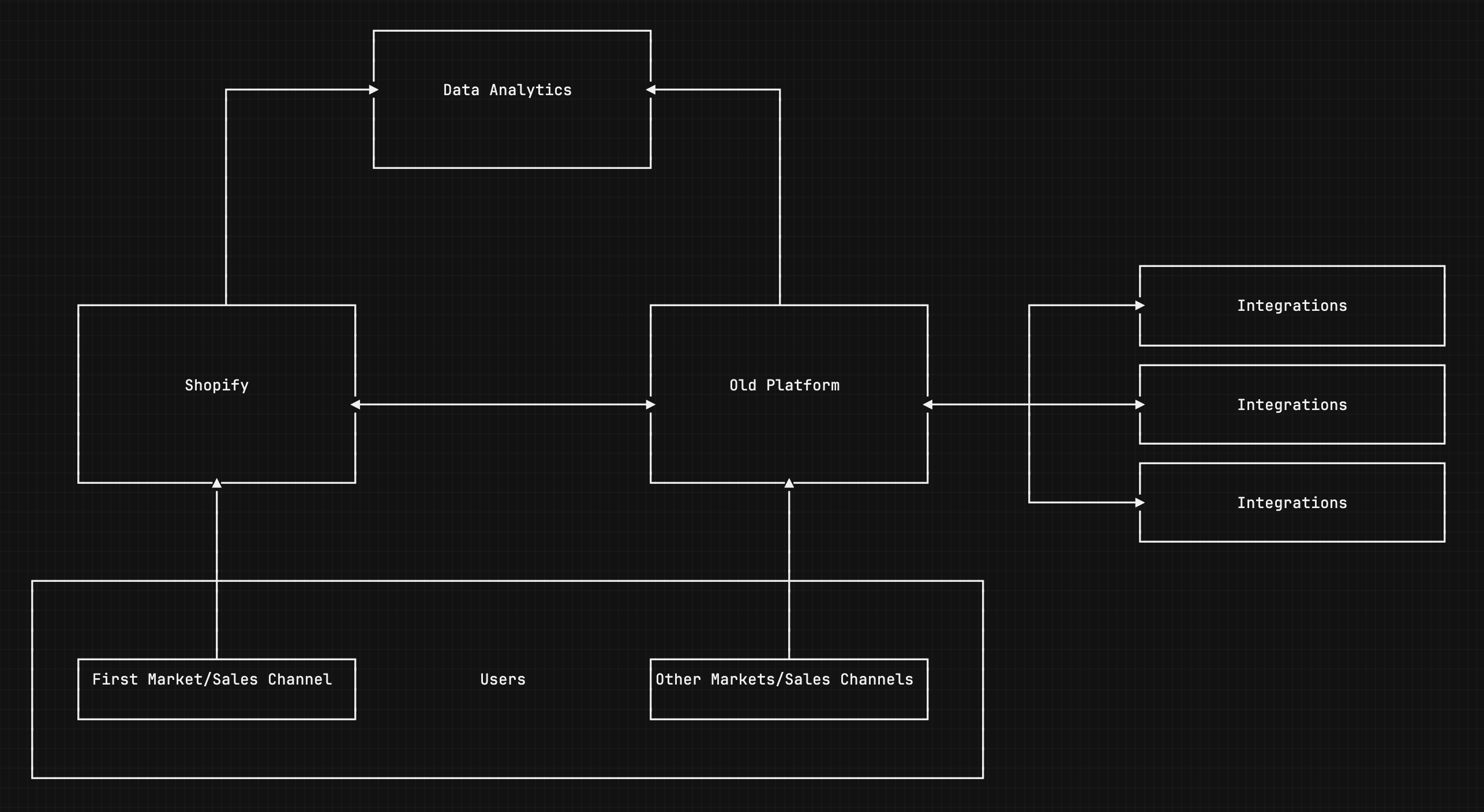
Here’s how it works:
- We launch Shopify for a single, low-risk market or sales channel. This might be a small international market or a limited product line.
- Users in that segment interact solely with Shopify, while other markets continue using the legacy platform. A useful trick here: leveraging Shopify’s new Customer Accounts. These accounts use one-time passwords, so we can migrate only the relevant users’ orders without needing password data. Later, we can connect accounts with a custom identity provider if needed.
- Shopify and the legacy platform are tightly integrated. Products and collections sync from the legacy platform to Shopify, preserving PIM processes. Orders placed on Shopify sync back to the legacy system or a shared OMS, so downstream integrations and operations (fulfillment, finance, support) remain unchanged.
This setup lets us test Shopify in a real-world environment without disrupting existing operations. If needed, rollback is simple: we redirect traffic back to the legacy platform without affecting back-office systems.
Phase 2: Scale Up, One Market at a Time
The second phase is about expanding Shopify’s footprint through multiple, incremental iterations.
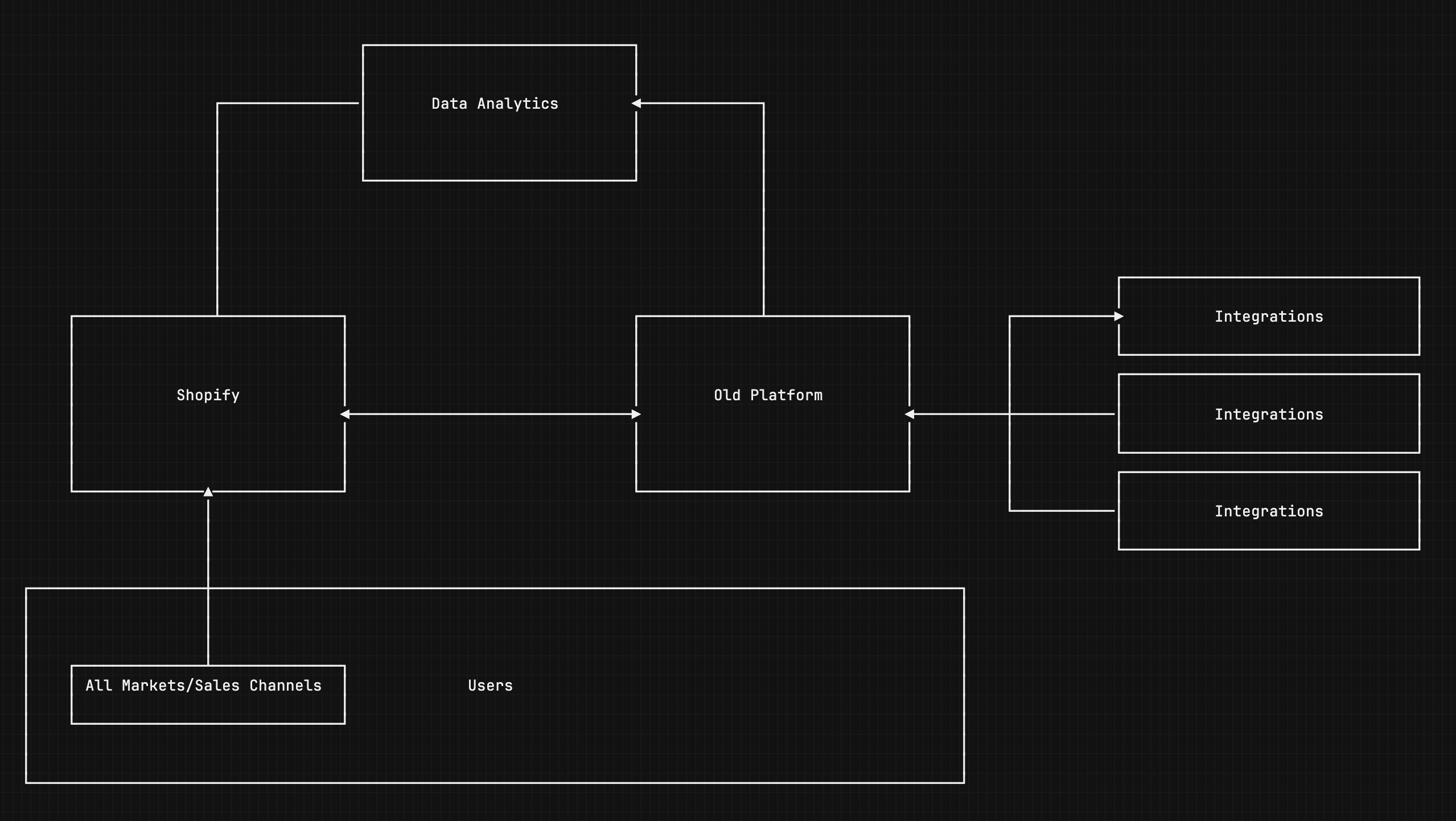
We do this by:
- Selecting the next market or sales channel with lower business impact.
- Identifying gaps between current Shopify features and that market’s requirements—such as shipping methods, currencies, or languages.
- Filling those gaps to prepare Shopify for increased traffic.
For example, we might help a brand expand from a single EU market to several, simply by iterating on localization and shipping options. As each iteration proves successful, we redirect traffic and repeat the process, steadily building confidence.
Eventually, all segments are running on Shopify—a sign that the migration is functionally complete.
Phase 3: Shut Down the Legacy Stack
Now that all traffic has moved to Shopify, we begin dismantling the old platform.
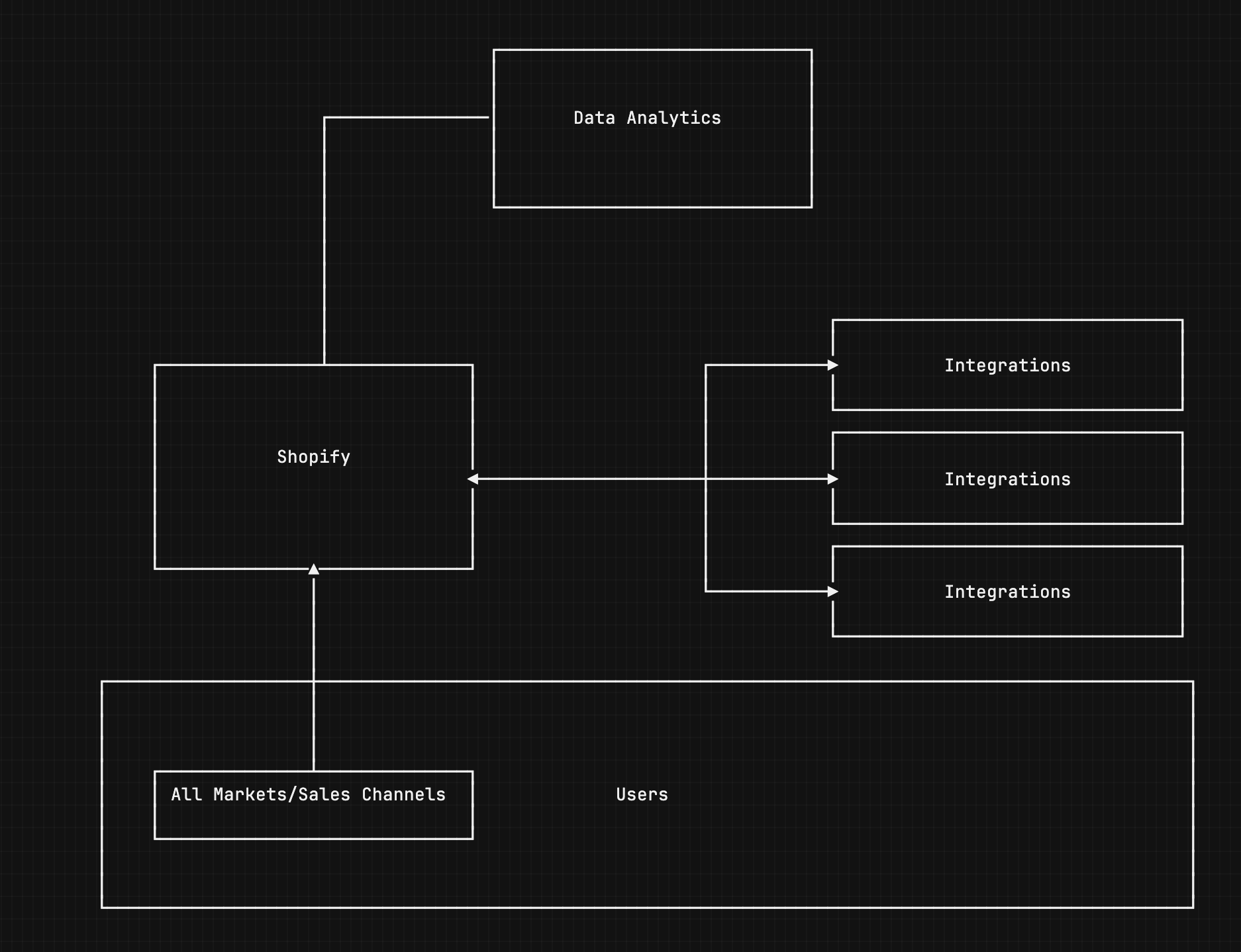
This phase is essential for reducing technical overhead and cost. Rather than replacing all integrations at once, we decouple each one individually, each with its own rollback plan. This reduces the risk of introducing widespread issues.
A typical sequence might start with analytics, followed by CRM and other integrations. Each step gives us a chance to verify behavior and performance before moving on to the next.
By the end, every integration runs directly through Shopify, and we can fully decommission the legacy system with confidence.
What This Looks Like in the Real World
With a parallel architecture in place, we expand Shopify’s role country by country, channel by channel. Each new launch is reversible. If issues arise—UX bugs or operational hiccups—we simply reroute traffic to the old system.
In one recent project, we started with a few low-impact countries. The initial Shopify build handled basic operations but deliberately omitted full feature parity. This allowed rapid testing and iteration. As each market validated the setup, we introduced localized features and content. Eventually, the platforms became so similar that migrating the core markets felt like a natural final step.
Another client, using a headless setup, took a slightly different route. They began by migrating their image CDN—a feature included in any Shopify plan. This alone offset the cost of their plan. Next, they moved PDPs to Shopify’s Storefront APIs. PLPs are next, still powered by Algolia, which remains synced with the old platform. Bit by bit, they’re building a safer, modular migration path.
When Is a Phased Rollout Worth It?
This phased, dual-system approach is ideal for large, complex e-commerce operations. A full cutover is too risky: even a single hour of downtime can cost tens of thousands and cause long-term brand damage. With deep integration needs across ERPs, OMSs, CRMs, and analytics platforms, maintaining operational continuity is non-negotiable.
Running both platforms in parallel creates a safety net that justifies the extra engineering effort.
One important tradeoff to consider: while this approach may slightly extend the overall project timeline, it significantly shortens your time-to-value. Because you're launching a lean implementation early, your team starts learning, iterating, and delivering value much sooner than with a traditional big-bang launch.
Smaller brands may not need this level of complexity. If your tech stack is simpler, with fewer integrations and lower order volume, a direct switch might be more efficient. At Nebulab, we help clients choose the right strategy based on their scale, risk tolerance, and operational maturity.
Replatforming Without Regret
Traditional replatforming aims for full feature parity before launch. That usually leads to long timelines, bloated requirements, and fragile go-lives that can’t be reversed.
Our approach is different. We start small, test early, and scale with intention. With robust data sync, meticulous planning, and real-world validation, we make each phase of migration safe, reversible, and rooted in operational reality.
Enterprise replatforming doesn’t have to be an all-or-nothing gamble. With the right strategy, you can migrate to Shopify Plus in a safe, phased, and fully reversible way. Let's do it together!

